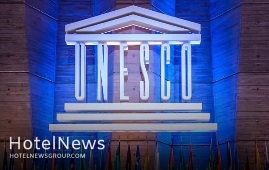
Iran seeks to register five intangible elements on UNESCO’s list of Intangible Cultural Heritage of Humanity in near future, Mehr reported on Tuesday. The country has recently submitted [revised] dossiers for the ancient festivities of Mehregan and Yalda, crafting and playing [the stringed instrument of] the Oud, traditional craft of silk spinning, and Turkmen Duzi (a kind of traditional textile being practiced by Iranian Turkman tribes), the report said. Yalda (the birth of a new sun), which is also called Yalda Night, is celebrated on the eve of the winter solstice, which falls on the last day of Azar (the last month of autumn in the Iranian calendar year). On that graceful night, the winter chill is vanquished and the warmth of love embraces the entire family. It’s a time for pleasant family reunions that entails laughter, merriment, and good cheer. According to UNESCO, Yalda ceremonies, in the best way, point to cultural diversity and human creativity, especially when one considers the wide range of the communities that celebrate it. Mehregan celebration, which falls on the 196th day of the Iranian calendar year that usually equals October 2 in the Gregorian calendar, brings together clusters of Iranian Zoroastrians to hold reunions in celebration of Mithra, an ancient goddess of friendship, affection, and love. A key feature for the event is large spreads in purple laden with various ingredients, dishes, and elements each on behalf of a particular belief. Fruits, vegetables, dried nuts, sweets, rosewater, grilled lamb meat, lotus seeds, and silver coins, and a scale are typically placed, the latter symbolizes autumnal equinox. The oud is a pear-shaped stringed instrument frequently used in Persian and Middle Eastern music whose construction is similar to that of the lute. It was thought that this musical instrument was invented by nomad tribes since it was light and mobile. Some believe it was originated in the Caucasus region, other sources report more western regions as a point of origin. Some findings show an early elliptical design of Oud found in the ruins of Shush, Iran. Some experts theorize that a priest is shown to be playing it in that depiction. The Islamic Republic expects to reap a bonanza from its numerous tourist spots such as bazaars, museums, mosques, bridges, bathhouses, madrasas, mausoleums, churches, towers, and mansions, of which 24 being inscribed on the UNESCO World Heritage list. Under the 2025 Tourism Vision Plan, Iran aims to increase the number of tourist arrivals from 4.8 million in 2014 to 20 million in 2025.
Create: May 1, 2021 Edit: May 1, 2021 Regional News
In New York City, the sidewalk cafes are bustling, the parks are full of picnics, and the city’s attractions are coming back to life. The city is blooming again, cautiously but happily. And tourists are coming back to town. The same is true across the United States. While hoteliers are optimistic that the industry is starting its path to recovery, it remains impossible to overstate Covid’s effect on travel. The late Arne Sorenson, Marriott CEO, estimated in the early stages of the pandemic that “Covid-19 is having a more severe and sudden economic impact on our business than 9/11 and the 2009 financial crisis combined.” STR has reported YoY occupancy decreases of more than 50% nationwide. Covid-19 was a collapse, not a downturn, with properties and teams hollowed out. While numbers are trending in the right direction, there is uncertainty around the speed and overall strength of recovery, particularly in segments like international leisure, corporate, and group. Every fellow hotelier we’ve spoken with this year is realistic about the amount of work that remains to bring the industry back. Yet several also discussed how, when looked at from a certain perspective, they see new opportunities going forward. For years, managing a hotel distribution network has felt like tying your shoes on the run—impossible to finish any one task because the next step is always on top of you. But the gradual ramp-up this spring and summer is the perfect chance for hotels to be strategic about their return to business, and to set a foundation for better, healthier distribution strategy in the long-term. Recent data about changing guest preferences post-Covid also provides hotels with reason for optimism. Travelers Are Ready to Form New Habits Marketers know that changing a person’s behavior is hard; people are creatures of habit. Academics estimate that 45% of our daily behaviors are habitual, cued by triggers we aren’t aware of and carried out automatically. Charles Duhigg’s book, The Power of Habit: Why We Do What We Do In Life and Business, is about the science behind our habits, and explores some of the ways forward-thinking retailers leverage data to better understand these habits and more easily change them. Target Corp. and its specific strategies for using big data in its marketing campaigns was the subject of a long-form excerpt of Duhigg’s book that ran in the New York Times. The whole piece is full of wonderful insights about e-commerce, even years later, but some of Target’s specific conclusions about customer habits and purchasing are especially relevant as we consider the post-pandemic travel landscape. The core learning is that while ingrained shopping habits are usually too difficult to change with even the most ingenious ad campaign, “there are some brief periods in a person’s life when old routines fall apart and buying habits are suddenly in flux.” The greatest of these life moments is the birth of a child, “when parents are exhausted and overwhelmed and their shopping patterns and brand loyalties are up for grabs.” If Target could identify new parents, they could identify people whose lives were in such a state of flux that their habits could be changed and they could be made into better, more loyal customers. The whole planet is in the process of emerging from just such a moment. Our lives have all changed shape immensely; more than a few of us feel “exhausted and overwhelmed” and our old routines have all fallen apart. But travelers are eager to have new experiences again, and as tourism returns we are already seeing trends in post-pandemic booking habits that look very positive for hoteliers. After a full decade of losing market share to OTAs and third parties, hotels are seeing the direct channel get a boost this spring, with the uncertainties of traveling post-Covid making guests eager for direct communication with the hotel. Skift’s Hotel Distribution Report from November 2020 stated that hoteliers are reporting increases of more than 10% for the Voice channel, with curious guests calling to ask questions about newly implemented cleaning policies, the changing availability of property restaurants, and the status of area attractions. Properties and brands employing chat functionality are seeing enormous traffic increases over those channels as well, “thousands of percent above what they used to be.” Guests have also learned that booking direct offers the most flexibility, with some OTAs refusing to offer refunds and consumers filing complaints. Guests’ renewed preference for direct communication with the hotel, and the direct booking increases that come with it, seems likely to continue as long as the effects of the pandemic linger, through 2021 and beyond. OTAs will be a major engine driving recovery; their role in discovery and filtering for new guests is more important than it has ever been. But for years now the hotel industry has lamented OTAs’ control over the guest relationship, with multiple industry-leading brands spending millions of dollars on “Book Direct” marketing campaigns to try to coax customers back to their direct channel. It seems like over the next 12 months, travelers’ changing habits and preferences may give hoteliers a second chance to make direct bookings the centerpiece of their relationship with their guests. Hoteliers Are Eager to Embrace Evolving Travel Norms It’s not only guests whose habits have changed post-Covid. Hotel leaders are in the same boat. Routines across every department have fallen apart and had to be rebuilt or, more often, reinvented. Every hotelier’s job now includes problem solving and innovation in addition to managing known challenges. The only constant over the past 12 months has been change. But among the revenue and marketing professionals we’ve spoken with, there is the sense that for well-prepared, nimble organizations there are opportunities post-Covid-19 that didn’t exist before. Some of the tangles in the distribution landscape have been cleared away, and for the moment there is more space to breathe. Over the next few months, top-of-funnel ad buys, social media, email marketing, and all of the outbound components of your marketing ecosystem will restart. Business leaders will begin to build new data sets. Conventions for public spaces and neighborhood venues will evolve. And guests will behave according to new, post-pandemic norms, which includes booking direct at higher rates than they had before. In a dynamic environment, flexibility and efficiency are critical. Brands that can make decisions the most quickly, with the most accurate data and the fewest tools, will be the most adaptable. Aligning your tech stack to your distribution strategy is the first place to start. Hotels that prioritize guest experience and lead with their direct channel needs when it comes to distribution will be the ones that are best positioned to take advantage of the changing landscape. This is the first of a multi-year recovery process. Going forward, each month should be better than the last. Both travelers and hoteliers will spend 2021 putting healthy new habits in place. The challenges of 2021 are substantial, but for once they don’t feel like tying your shoes on the run.
Create: Apr 27, 2021 Edit: Apr 27, 2021 International News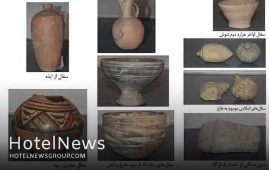
A total of 100 Iranian relics, which were on loan to the British Institute of Persian Studies (BIPS) for some half a century, have been finally returned home, ISNA reported on Saturday. "Through cultural diplomacy, another collection of [Iranian relics, which contains] 10,000 cultural materials, including 100 museum objects have been returned to the National Museum of Iran after half a century. The objects were on loan to the British Institute of Iranian Studies," the news agency quoted Iran's tourism minister as saying. We hope to set up a public exhibition of the relics at the National Museum of Iran in near future, Ali-Asghar Mounesan added, the report said. The museum objects are made of stone, pottery, bone, brick, etc., and the documentation of these works is on the agenda of the National Museum of Iran, the official noted. "The Tehran headquarters of the British Institute of Persian Studies used to be home to groups of British archaeologists and Iranologists who came to Iran to study, visit, conduct field studies and archaeological excavations…," the minister explained. BIPS was founded in 1961 to promote and encourage the study of Iran, its history, civilisation, and culture in all periods of history. Much of BIPS research and work in its early years was in the field of archaeology. In 1976 BIPS opened its purpose-built centre in northern Tehran, designed by Reza Khazeni architects. The Tehran centre houses an extensive library that exceeds 40,000 English and Persian language volumes, journals and periodicals as well as epigraphic material, maps, photographic and fieldwork archives; a unique resource that is open to Iranian students, scholars and members of the public. It is thought to be the largest collection of English language volumes in Iran. The Tehran centre remains one of the few overseas institutes continuing to operate in Iran. It also houses a hostel for the use of visiting academics and students. BIPS is one of a small number of British International Research Institutes funded by the British Academy, the UK’s national body for the humanities and social sciences. BIPS is also a member organisation, with a worldwide membership, open to anyone with an interest in Iran and the Persianate world.
Create: Apr 26, 2021 Edit: Apr 26, 2021 Regional News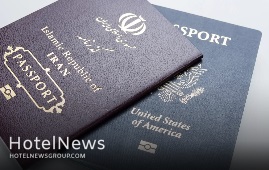
Iran has moved up from 101st to 99th place with visa-free access to 42 countries around the world, Donya-e-eqtesad reported. Iran's visa-free access includes visas on arrival to the countries such as Azerbaijan, Qatar, Lebanon, Turkey, Armenia, Georgia, Oman, Syria (Middle East), Sri Lanka, Maldives, and Macau (China), Cambodia, Malaysia, and Nepal. The latest results, released by the Henley Passport Index, indicate that the gap in travel freedom is now at its largest since the index began in 2006, with Japanese passport holders able to access 167 more destinations than citizens of Afghanistan, who can visit only 26 destinations worldwide without acquiring a visa in advance. Japan firmly holds onto the number one spot. Holders of a Japanese passport have visa-free access to 193 destinations worldwide. Singapore is still in second place on the list with access to 192 destinations without needing a visa, and South Korea and Germany share third place with 191 visa-free destinations. Italy, Finland, Spain, and Luxembourg share fourth place, with Denmark, Austria, and Sweden sharing the fifth spot. Based on the index, the weakest passports which require the highest number of visas when traveling around the world are the passports of Afghanistan, Iraq, Syria, Pakistan, Yemen, Somalia, and Palestinian Territory. The novel coronavirus pandemic has brought travel to a standstill nearly all over the globe, including Iran, causing huge job and revenue losses. However, experts believe the impact of virus infection would be temporary and short-lived for the Islamic Republic, which ranked the third fastest-growing tourism destination in 2019. Iran is home to one of the world’s oldest continuous major civilizations, embracing settlements dating back to 4000 BC.
Create: Apr 26, 2021 Edit: Apr 26, 2021 Regional News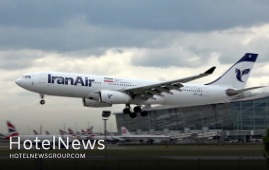
Iran on Saturday announced the halt of all flights to and from India and Pakistan until further notice over a COVID-19 variant to avert its spread in the already-stricken country. Given the high numbers of COVID-19 cases detected in India and Pakistan, the Islamic Republic has decided to suspend all direct and indirect passenger flights with the two upon the request of the Health Ministry, Mehr reported on Saturday. The ban, which takes effect at midnight local time on Saturday according to Iran’s civil aviation organization, the report said. Health Minister Saeed Namaki has asked the interior minister to “halt the direct and indirect transport of travelers from India”, Iranian media reported. India on Thursday recorded the world's highest daily tally of 314,835 COVID-19 infections amid fears about the ability to crumble health services to cope.
Create: Apr 24, 2021 Edit: Apr 24, 2021 Regional News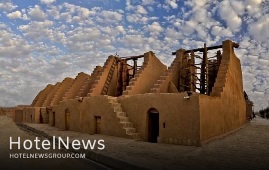
The process of preparing four caravanserais and Asbads (ancient vertical-axis windmills) in South Khorasan province is being carried out and the UNESCO assessors are projected to visit the sites by mid-May to register them in the World Heritage list. UNESCO assessors will travel to Iran for a final evaluation, and we hope to see the province's fifth property inscribed on the UNESCO World Heritage list this year, Hassan Ramezani, director-general of Cultural Heritage, Handicrafts and Tourism Department of South Khorasan said on Wednesday, ILNA reported. Located in eastern Iran, South Khorasan province is home to many historical and natural attractions such as Birjand Castle, Dragon Cave, Furg Citadel, and Polond Desert. It is also known for its famous rugs as well as its saffron and barberry which are produced in almost all parts of the province. Asbad used to be a smart technique to grind grains. It also bears testimony to the human being’s adaption with nature by transforming environmental obstacles into opportunities. Iran plans to register a wide collection of its Asbads in different provinces on the UNESCO World Heritage list. The architectural spaces of these caravanserais include entrance porches, cells, docks, stables, water reservoirs, and the royal sitting hall, and in some caravanserais, impressive and very beautiful brick decorations have been used, and this architectural style and characteristics have made these works valuable." We are trying to prioritize the excavations of Kaleh Koob site in the form of joint studies with foreign groups through the Cultural Heritage Research Institute so that we can use modern Iranian methods in exploring this site." He explained the province's progress plans in the field of cultural heritage and said: "We have some research work in the field of very rich and valuable areas of South Khorasan which we continue them to reach a clear result. One of them is the ancient site of "Kaleh Koob" around the city of Sarayan, where we have done three seasons of archeological excavations so far, and there are artifacts and remains that date back to the late Neolithic to the Bronze Age.” He continued: "We are trying to prioritize the excavations of Kaleh Koob site in the form of joint studies with foreign groups through the Cultural Heritage Research Institute so that we can use up-to-date Iranian methods in excavating this site." He also pointed out that so far three seasons of archeological excavations and speculation operations have been carried out in the area of "Takhcherabad", noting: "During the study of architectural works and evidence obtained, in the opinion of many of my colleagues and experts and archaeologists, the antiquity of this hill, which is located around Birjand, can be traced back to the Median period in terms of architecture and history. Therefore, we definitely need to continue the exploration operations in this area so that we can achieve more accurate and scientifically sound results." Ramezani pointed out: "In the field of restoration, fortunately, the Ministry of Cultural Heritage, Handicrafts and Tourism, and especially the Deputy Minister of Cultural Heritage, Dr. Talebian, had a good view and also a good knowledge and domination of the historical capacities of South Khorasan, which has made us now one of the leading provinces in the field of buildings that are being restored with the participation of owners and the private sector, and we are even restoring a large number of historical buildings with the participation of owners and the private sector." The official underlined: "Following this process, a number of historical monuments in the province will be restored this year from our partnership funds. In addition, in the field of urban and rural historical textures, due to the number of nationally registered valuable textures, this year we will also see the continuation of restoration works in the walls of the passages, flooring, and restoration of single buildings in the area of historical textures." Ramezani also announced: "By mid-May, the process of launching the Museum of Clothing and Textiles of South Khorasan, which has been completed by the private sector at the historical house "Pardeli" in Birjand, and will be put into operation during the cultural heritage week."
Create: Apr 24, 2021 Edit: Apr 24, 2021 Regional News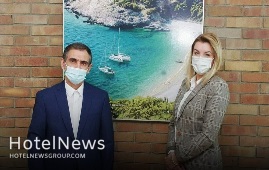
The Iranian ambassador in Zagreb Parviz Esmaili met with Croatian Tourism and Sports Minister Nikolina Berniats, emphasizing the need to implement the previously signed agreements, IRIB reported. Extensive historical, cultural, and natural capacities of the two countries, as well as cultural commonalities and friendship between the two nations were underlined as basic components for the development of cooperation in the tourism sector. Specialized tourism in the fields of health, nature, and technology was also among the areas discussed by the two sides. The two sides agreed to launch a joint tourism working group between Iran and Croatia soon. In the field of sports, it was decided that the parties will put a memorandum of understanding on the agenda to set the general framework for cooperation. The mutual assistance of the two countries in modernizing the structure of some sports such as swimming and wrestling, exchange of coaches and athletes, joint camps as well as scientific-sports cooperation were emphasized by both sides.
Create: Apr 24, 2021 Edit: Apr 24, 2021 Regional News
Hoteliers, let me ask you a question. What does it mean to run a secure hotel? The answer may vary, depending on who you ask. Why? Because security, across any industry, is a multifaceted discipline and an essential consideration for brands that interact with customer data and information. Cybersecurity attacks are commonplace in today’s world, and hotels are increasingly attractive targets due to their association with a variety of sensitive data. In fact, two of the top five biggest data breaches made public in 2020 were at hotel chains. Globally, cybercrime damages are expected to reach US $6 trillion by 2021. As our industry continues to embrace technological innovation across common touchpoints in the name of enhanced convenience and personalization, we realized the subsequent need for enhanced security protocols. With great power comes great responsibility, and the handling of personal data is no exception. The possibility for personalization is seemingly endless, but so are the associated security risks if hotels don’t take the necessary precautions to fortify their operations. Ironically though, hospitality’s ongoing focus on compliance often obscures the macro-level view of hotel security. All too often, we make the mistake of associating compliance with security when, in fact, they are not synonymous. Adherence to regulatory standards is important, but these standards often fail to account for the increasingly nuanced and ever-changing requirements of cybersecurity initiatives across hospitality. With ten years of former military experience under my belt, I’ve entered IT and cybersecurity with a unique perspective. My former career instilled in me the importance of a detail-centric approach, which I now apply to the world of hospitality regulations and procedures. I understand, intimately, that compliance is the first step – but it isn’t the entire picture. This realization holds even more weight in the pandemic era, a time when hotels are increasingly vulnerable to cybersecurity breaches and risks. A Demand for Security Innovation Historically, the hospitality industry has been slow to embrace technological change. Under the guise of tradition, many hospitality leaders have fallen victim to antiquated ideologies over the years — better known as the “we’ve always done it this way” mindset. Despite this, innovation is, ultimately, undeniable across a landscape that is primarily dictated by guest demands and preferences. However, the rate of change across our industry is often slow, and there is perhaps no better example of this stalemate than hotel tech security. While many aspects of our industry have seemingly ‘caught up’ to other sectors in regards to forward-facing innovation, IT and security have, for the most part, been left in the proverbial dark ages. We see hotels offering their guests an ultramodern experience, rife with next-gen upgrades and platforms including self-service kiosks, smart hotel rooms, AI-powered concierge robots, and keyless room entry. These are incredible advancements. When we pull back the curtain to view the policies and procedures at work behind the scenes, we realize a stark contrast. A robot concierge at a given hotel might know your name and seamlessly address your requests once you arrive on the property. However, that same hotel will probably still require you to manually fax or email a credit card authorization form. As an industry, we are making strides forward, but we have – for the most part – left core security considerations behind. To this effect, many of the hotel security breaches that dominated headlines involved hotels that were, in fact, compliant in terms of regulatory standards. These breaches often compromised point of sales systems that, despite complying with current industry standards, exposed guest credit card information in a way that put guests and hotel reputations at risk. Hotel Security for a Post-Pandemic World When considering the scope of hotel cybersecurity, it’s important to recognize that credit card theft is only one of many risks. Our industry relies on the exchange of large amounts of sensitive personal information, and the post-pandemic innovation and automation poised to spearhead hospitality’s recovery will, ultimately, thrive on guest data. As we look to a future of keyless room entry, AI-powered touchpoints, and high-tech self-service, we must consider the enhanced security required by increasingly interconnected hotel systems. Reports indicate that the more devices connecting to a network, the more vulnerable it is to cyberattacks. 513,936,296 hospitality data records were stolen or lost in 2018. In early 2020, 5.2 million guest records were compromised in one hotel chain breach 423 million travelers have been victims of a cyberattack through their business with hotels 70% of guests believe hotels don’t invest enough in cybersecurity protection Moreover, we must acknowledge the current state of the hospitality workforce. As our industry prepares for recovery after a period of severe downturn, we will welcome many newcomers to our industry in addition to restricted staffing due to limited post-pandemic budgets and cost-saving initiatives. New talent is welcome, but hotels should be increasingly cognizant of IT and cybersecurity training and awareness for all new and returning staff. After all, 95% of all data breaches can be traced to human causes. With this in mind, comprehensive cybersecurity training should be prioritized at every level of any organization. In fact, hotels should take this time to audit and, potentially, reinvent their cybersecurity best practices. Not only should risk assessments be performed every year, but they should also be performed every time a hotel implements a new solution. This may seem tedious initially, but dealing with the costs and reputational repercussions of a large-scale cybersecurity breach is far more taxing. Now, more than ever before, hoteliers must look beyond compliance to consider big picture hotel cybersecurity. Identifying any and all opportunities for risk is the only way to defend against it, and data security should be embedded into the very culture of a hotel. The more you educate your employees, the less likely they are to become the victim of a breach or attack.. In the post-pandemic world, creating a truly secure environment demands a diverse and increasingly detail-oriented approach to managing and protecting sensitive information.
Create: Apr 19, 2021 Edit: Apr 19, 2021 Hotel Management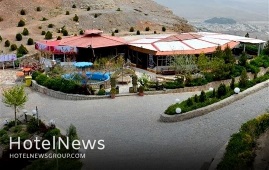
In the past Iranian year (ended March 19), 1,767 jobs were created by investing in tourism-related projects in the northwestern West Azarbaijan province. “The largest number of jobs is related to the issuance of licenses for handicraft producers, which has led to the employment of 549 persons,” Jalil Jabbari, director-general of Cultural Heritage, Tourism and Handicrafts Department of West Azarbaijan said, IRNA reported on Friday. In the year ended in March 2020, some 312 job opportunities created by tourism development projects, he added. Jabbari went on to say that 112 jobs have been created through projects implemented by the private sector and 30 jobs have been created through renovating national and world heritage sites in the province. Part of the activities of the department in the past year has been focused on documenting, exploring, demarcating, layering and studying historical monuments, he said, adding, “this has created employment for 466 persons." Jabbari concluded that 30 jobs have been created in the accommodation and hospitality sector, six in the ecotourism accommodation sector, 34 in the travel services offices, and 35 in the handicraft production units.
Create: Apr 18, 2021 Edit: Apr 18, 2021 Regional News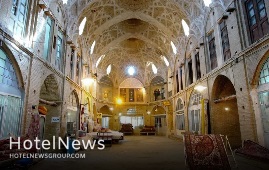
More than 180 billion rials (about $4.2 million at the official rate of 42,000 rials) in loans has been paid to tourism and handicraft businesses affected by the coronavirus pandemic in Zanjan province. Amir Arjmand, the director-general of Cultural Heritage, Tourism and Handicrafts Department of Zanjan said the financial facilities were paid within the framework of 547 projects to the businesses having 1,500 employed persons, IRNA reported on Saturday. He also noted that 623 units were introduced to receive the facilities in the province, of which 76 cases were related to the field of tourism and 547 cases were related to the field of handicrafts. "So far, the tourism units of the province that have succeeded in receiving corona facilities include travel and tourism services offices, eco-lodges, hotels and welfare, and intermediate service complexes." The official also said: "Identifying, training, paying facilities and supporting activists in the field of handicrafts and tourism facilities of the cities with the purpose of boosting production in this area and creating employment is our priority this year." Despite the difficult situations due to the coronavirus, the development of handicraft workshops, the development of tourism facilities, and the increase in the issuance of licenses for handicrafts and travel services and ecotourism offices were considered last year.
Create: Apr 18, 2021 Edit: Apr 18, 2021 Regional News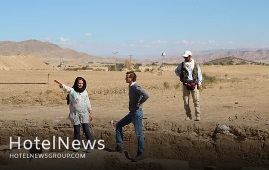
The tourism chief of Iran’s North Khorasan has announced plans to resume several excavations across the northeastern province using the expertise of archaeological teams from France and Germany. “Joint archaeological excavations with German archaeologists are planned to resume across Tepe Rivi if the coronavirus situation allows,” ILNA quoted Habib Yazdanpanah as saying on Saturday. “Moreover, we have are perusing to restart work on the historical town of Faruj with the presence of French archaeologists,” the official said. Last October, experts from the Louvre and the University of Tehran were granted a license to conduct a new round of excavation on the ancient town of Faruj. “Experts from the University of Tehran and the Louvre museum in Paris will conduct a new season of archeological excavation in the ruined city of Faruj with a permit obtained from the Research Institute of Cultural Heritage & Tourism,” according to Iranian archaeologist Meysam Labbaf-Khaniki. In the same year, experts from the Louvre and the University of Tehran unearthed the ramparts and towers of an ancient fortress, believed to date from the times of Parthians (247 BC – 224 CE) in Viran-Shahr near Faruj. Furthermore, teams of Iranian and German archaeologists have completed several archaeological seasons across Tepe Rivi, which has so far revealed magnificent remains of the Bronze Age up to the Sassanid period. Archaeological research works in Rivi started in 2012. Since then archaeologists accessed remains of settlements from the Bronze and Iron Age, the Achaemenid, the Parthian, the Sassanid dynasties, and the early Islamic period. The previous rounds of research had been hired various experts in archeology, geography, geophysics, geomorphology, and ecology who took part from the [Ludwig Maximilian] University of Munich; the [Free] University of Berlin; the University of Tehran; and Shahid Beheshti University, the report said. Based on the studies, various architectural and archaeological evidence from the Parthian and the Sassanid era were discovered in the Rivi site, which is situated in Maneh-Samalqan county of modern North Khorasan. The evidence, according to Mohammad-Javad Jafari who headed the fifth season of archaeological excavation at Rivi site, indicates the sequence of settlement in the area in the aftermath of the Achaemenid era, according to the Archaeology News Network. In 2019, several historical clay stamps, estimated to date from the Achaemenid and Parthian eras, were discovered in the ancient site. “The seals were found alongside clay urns in a large hall and the seals are imprinted in a variety of geometric patterns [depicting] plants, animals, and human figures. Studying the findings can yield valuable information on the economy, culture, and arts of the ancient societies,” Jafari said. These stamps represent the widespread and complicated economic relations that people of the time had with other communities in such a way that made them bring together and store goods.” Evidence suggests that residents of this area sealed the urns that were loaded with particular goods then tied them with ropes, the archaeologist said. The history of Khorasan stretches back to very ancient times. It was part of the Achaemenian Empire of the 6th to 4th century BC and the Parthian empire, which spanned from the 3rd century BC to the 3rd century CE.
Create: Apr 11, 2021 Edit: Apr 11, 2021 Regional News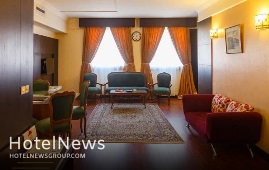
Iranian hotels and other accommodation units remain open as the fourth coronavirus wave gains momentum across the country. To curb the outbreak, President Hassan Rouhani on April 8 announced plans to close down all non-essential businesses, including bazaars and malls in cities color-coded 'red' or very high-risk for a ten-day period as of Saturday. “Hotels and other accommodation unite will be remaining open during the fourth coronavirus wave,” according to the Iranian Hoteliers Association, ISNA reported. The total number of coronavirus cases surged past the two million on Thursday as the new wave of infections has overwhelmed hospitals in all major cities. “We are expecting even more hospitalizations caused by the viral disease over the next few days,” Health Minister Saeed Namaki said on Friday. ICU beds are filled in many cities and the government is to set up makeshift hospitals to make room for more patients and advising patients to visit hospitals only if it is necessary. The number of coronavirus cases rose after millions traveled across the country during the Noruz holiday, which officially began on March 20. The Islamic Republic reported its highest number of daily coronavirus infections in more than three months period after millions challenged government guidelines and traveled during the two-week holiday. Before Noruz, health officials voiced concerns about the fourth COVID wave due to the traditional travels, mostly to visit family and loved ones. Authorities had urged people to limit travel and in-person visits, saying that travels during the Noruz festival could lead to another wave of infections across the country. President Hassan Rouhani declared new travel bans for cities situated in the “red” and “orange” zones to combat the new COVID-19 variant. Rouhani called on people to avoid traveling during the Iranian New Year holidays to help contain the spread of coronavirus. He said it would be forbidden to make trips to cities marked as “red” and “orange” in terms of the prevalence of COVID-19. “We request people to avoid traveling during Noruz holidays for the sake of their own health… It will be forbidden to travel to red and orange towns and cities,” he said. “No one should make any plans to travel to these cities,” he stressed. The Ministry of Health has classified districts based on the rate of coronavirus infections with red color indicating high risk, orange meaning medium, while yellow implied low risk and blue being the least.
Create: Apr 11, 2021 Edit: Apr 11, 2021 Regional News
